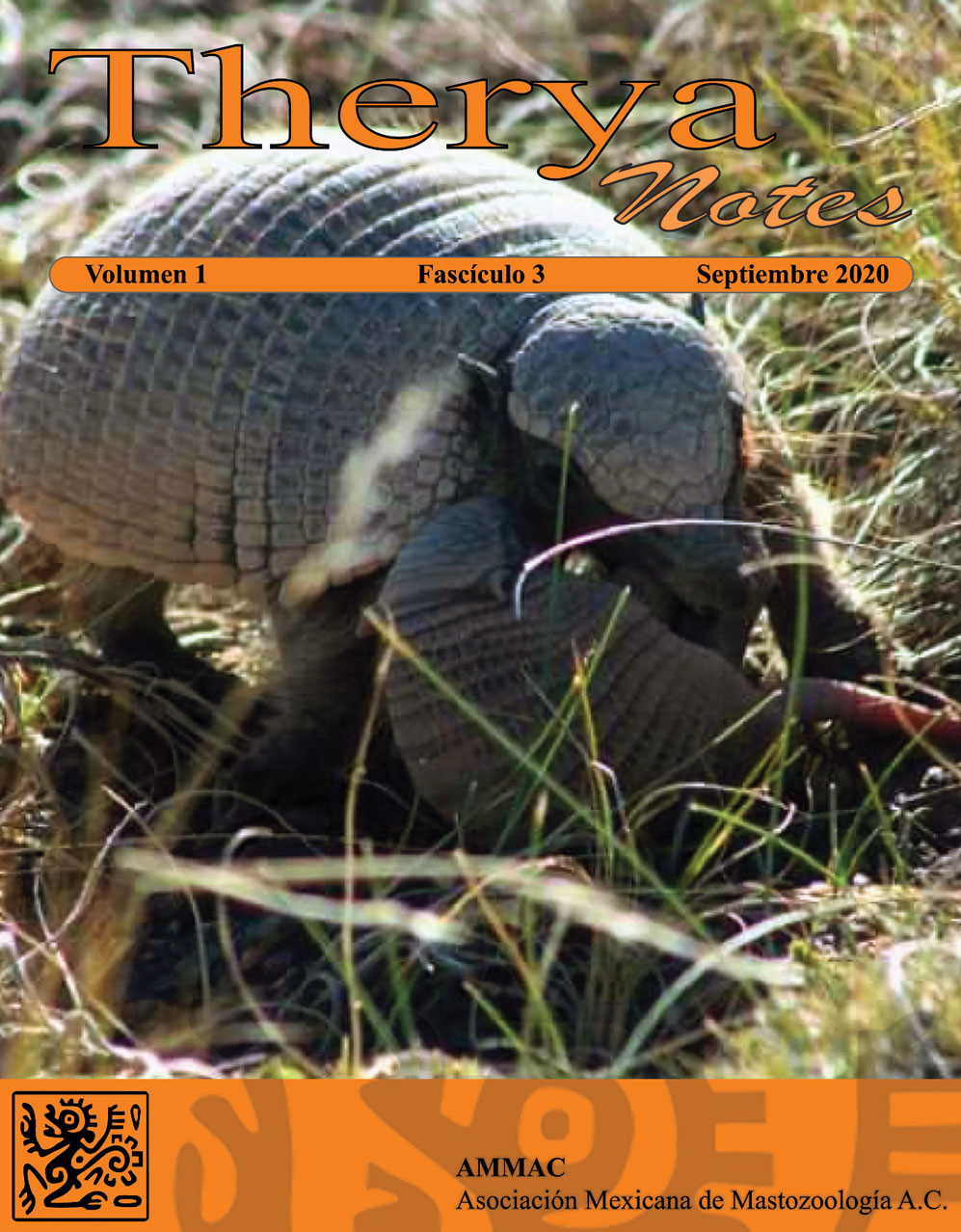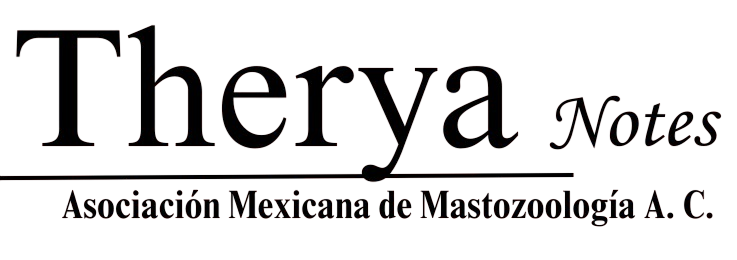Observations of lesions in Sturnira parvidens from Central México
DOI:
https://doi.org/10.12933/therya_notes-20-23Keywords:
Anomalías, Chiroptera, fractura, lesiones, metacarpo, murciélagos filostómidos, síndrome alopécicoAbstract
Observations on health condition of organisms are useful to understanding the species biology, particularly because aspects as diseases and lesions are little known in phyllostomid bats, despite their high diversity in the Neotropical region. We reported two anomalies found in the northern yellow-shouldered bat (Sturnira parvidens) at a northwest locality of the state of Hidalgo, México. Bat sampling was carried out on February 2020 using three mist nets (46.8 m2 net / night) at a locality of the municipality of Nicolás Flores. The individuals were measured and identified to species level, and conventional somatic measures, in addition sex and reproductive condition were determined. From a sample of 29 individuals of Sturnira parvidens, two of them showed physical anomalies; one male had a lesion on the metacarpal bone of the second finger of the right wing, and other male presents alopecic syndrome in their back. Bone fractures apparently are less frequent compared to other wing damages in bats, but it is difficult to establish their causes, and alopecic syndrome may be a rare condition in S. parvidens, but more studies to identify the etiologic agents that produce this disease are needed.
Downloads
Published
How to Cite
Issue
Section
License
THERYA NOTES is based on its open access policy allowing free download of the complete contents of the magazine in digital format. It also authorizes the author to place the article in the format published by the magazine on your personal website, or in an open access repository, distribute copies of the article published in electronic or printed format that the author deems appropriate, and reuse part or whole article in own articles or future books, giving the corresponding credits. The Creative Commons CC BY-NC-SD license is used.![]()















